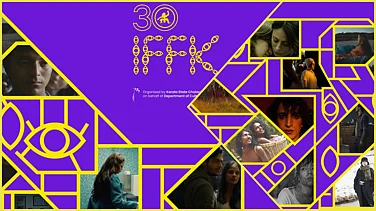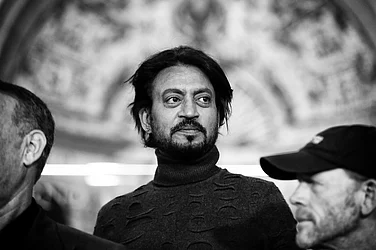Gautam Pemmaraju meets Mandar Thakur, COO Times Music, Chair of the Phonographic Performance Limited (PPL) Board and Board Member of The Indian Performing Right Society Limited (IPRS), the Indian Music Industry (IMI) and the Phonographic Digital Limited (PDL)
How do you broadly see the current Hindi film music industry? And the changes over the decades?
The current Hindi film music industry, as we know it, is in deep trouble. That’s for sure. Film music as we knew it, even until the past decade, seems to no longer resonate with consumers, outside of a couple of films perhaps. Music is typically cyclical (no guesses there) and Hindi film music isn’t a genre but just a large-scale, multimedia ‘sniffing’ machine that picks up global trends in music and incorporates them.
The issue isn’t just the music but also the desperate lack of originality in some of the compositions and artists in the Hindi film industry, who many times want to sound like each other or Arijit Singh. Arijit worked because he is a real original who ‘owned’ the song vocally and the compositions were apt and fitted the times.
I have no doubt that Hindi film music will refashion itself in a new avatar. I also firmly believe that the new avatar basically already exists in the next generation of artists massively popular over many Hindi film singers . You can call them by many names: next gen, regional, indie or underground artists.
Kesariya, one of the only Hindi film music albums which was a hit in recent times was produced by an indie music producer.Times Music‘s ffs platform (ffs is a new music sub-label launched by Times Music) is an apt ode to that process of old school A&R (Artists & Repertoire) , the division responsible for artist discovery and artist development . At scale, between the various arms of Times Music, like the revival of our Film music/OST sub-label Junglee Music, and the very silent launch of ffs a few months ago, we are poised to circulate new artists and songs across the fields of pop, non-film and film music.
On another note, the Hindi film industry had also become a male vocals-dominated industry with a lack of many classic female voices. Not to say there aren’t any; but something that stands out is needed. We also manage the very talented Deedar Kaur (the sister of Hindi cinema’s no.1 female vocalist, Asees Kaur) and will certainly attempt to bridge that gap.
There are many contributors to the process of creating Hindi film music beyond the composers and singers. Could you talk about this, especially in light of the labour and love of the different kinds of workers involved in the music side of the film world?
Broadly, the producer and director play huge roles in defining the context of Hindi film music . After all, it serves two purposes: to fit into the film and to serve as a marketing vehicle. So (though not in all cases), the real A&R work is done by them. They‘extract’ what needs to be done to make the song what it should become.
The arranger plays a similarly critical role in arranging the song in a flow and to lift it up with embellishments that enhance the music. Sometimes, the arranger and music producer are the same person. Their roles are to interpret and create a larger frame of carriage, incorporating so much more into the melody/composition and the lyrics.
The recording engineer helps to lay down the tracks within the overall vision of the composer, arranger and producer. A good one will help form the base of a good track.
Another critical role is that of mixing and mastering and in this area we have a lot more to achieve. This is the final stage of output and how it will eventually sound to the listener. Mixing and mastering can also be genre-specific and specialists in this field may differ from genre to genre.
The process of creating a ‘final’ song is intensive if it has to resonate with millions of people.
How do you see the intersection of non-film music, film music, innovation and global influences on the Indian music scene?
Indian music is at a collision point of many exciting things all happening at the same time . Platforms like Times Music’s ffs are precisely created to aid this collision process. I feel, and firmly believe, that India is at a massive inflection point in the creativity of artists and acceptance of that creativity by their fans.
There will be an incestuous interweaving of next gen indie music into the larger Hindi film canvas in a way where the resurrection of Hindi film music is almost certainly going to happen with newer original artists and more ‘current’ styles of music, as opposed to the syrup that was doled out in the recent past. Don’t get me wrong. There’s nothing wrong with syrup. It is just that it gets really boring after a while. And we all know music must never get boring.
We are finally in the era of ‘fan’ culture as opposed to consumer culture. Today, ‘artist first’ is common industry parlance. All one has to do is look at which artists worked and which songs worked this year and one will know that tastes in music have already moved on. There is no separate consumer of film music, international music, indie music, regional music--they’re all the same.
Interestingly, many collaborations between Indian acts and global stars are already underway and whilst I don’t see every one of them succeeding (one can’t ‘force’ a collaboration); I do see global sounds and songs coming out of these interactions that will finally move music to a wider global audience (as opposed only to NRIs via film music). As a board member of all the music industry bodies and societies, I see a large-scale, industry-grade movement toward this collision course. Punjabi pop is as mainstream as Hindi film music; the Haryanvi language is more national-level crossover-worthy than Bhojpuri. South Indian films are moving to a pan-India mainstay and indie music has more listeners on Spotify than Hindi film music, in many cases. If one were to read between the lines, as we have been doing at Times Music, then the reading is that the change has already happened. We are in the early days. But the acceleration of this will be very rapid.
What is a great thing to see is all the streaming platforms, short format video apps, social platforms , and others putting their plans, strategies and weight behind this movement.
Would you elaborate on the rise of South Indian film music and its pan-Indian presence?
This is a tough one to explain and I wish I had a clearer theory but the fact is that no one truly has one . All I can say is that in light of so much of the above, there is no ‘regional’ music anymore—it’s all mainstream. I said this a year or two ago in a keynote speech I gave at a premier music industry conference. It’s almost a kind of caste system at work when we call things ‘regional’ in this day and age. I am glad that the national-level crossover has happened. The South Indian film industries have always had an extremely great bunch of talented artists and composers and I feel now that the films are going pan-India, the exposure to these wonderful talents is huge and that’s created a great palate within fans to consume a broader variety of music. The South has always had a very global style of arrangers, recording engineers, producers and mix/mastering people.
What is special about the current moment?
After the rise of the Internet 1.0 couple decades ago, the music industry lost its mojo and was almost destroyed. But today is a different story. The industry adapted like chameleons to change and I believe this is the best time to be in music. Secondly, this is also the first time in history that structured capital has found its way into the music industry globally. Over the last 2 years, the deal making has only increased. That should provide ample capital for creativity to explode.
























